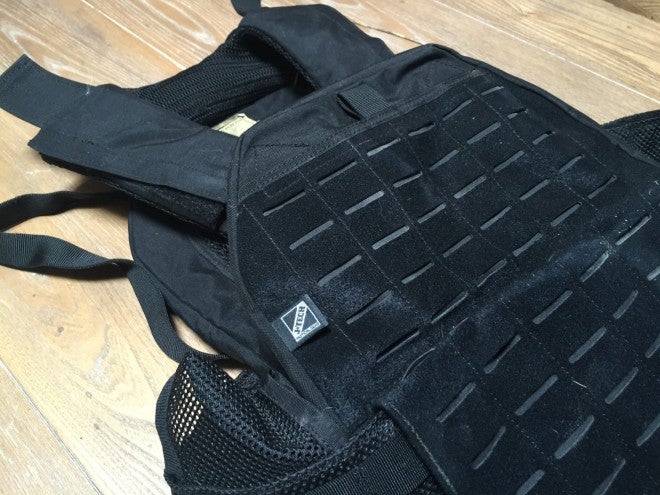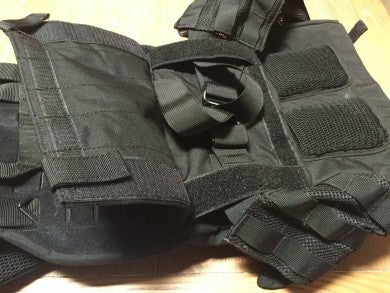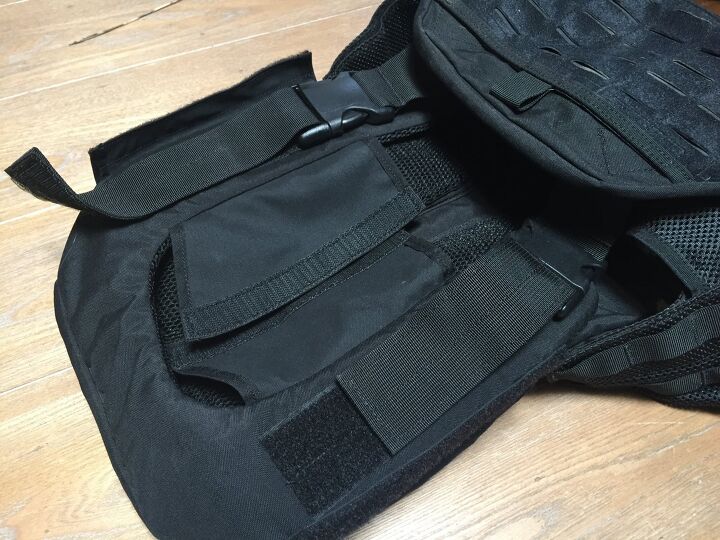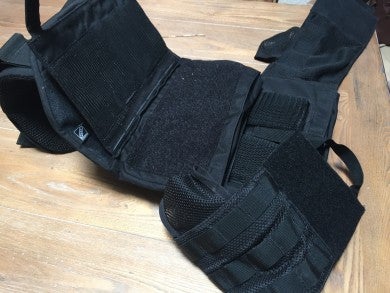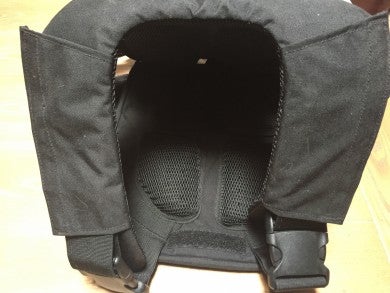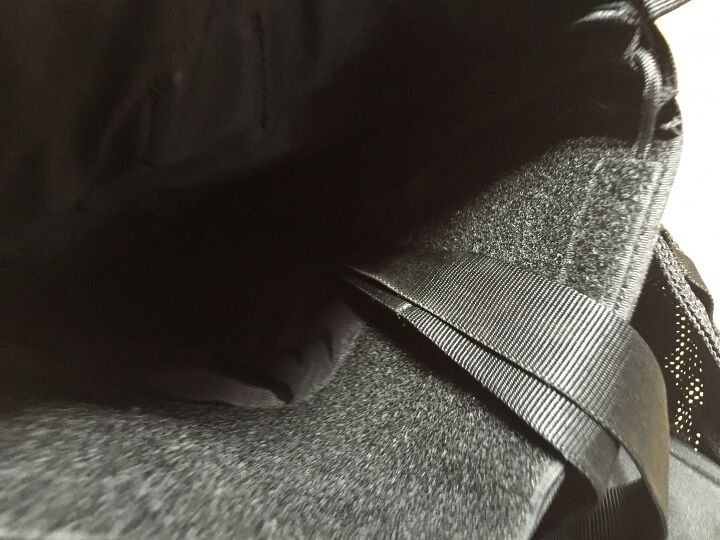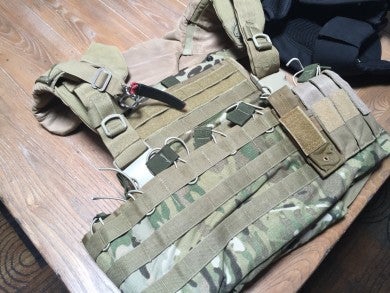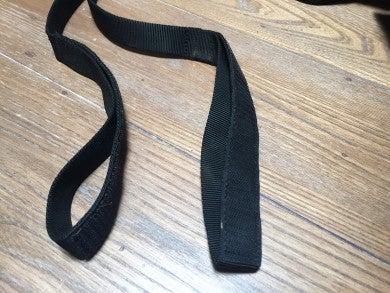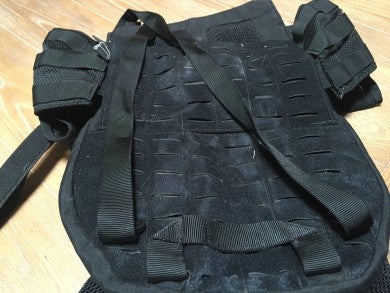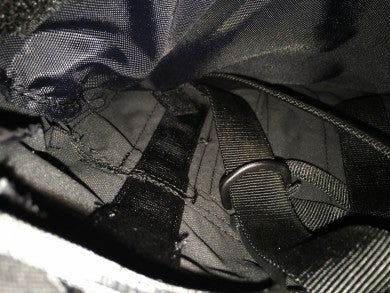Strike has a history of making super affordable mods for your guns that really can dress it up and give it a different look than all of the other “black rifles” out there. When my editor approached me about doing a review for a new product they have, after he described it to me, I cocked my head to the left and affixed a blank bovine stare (a little how my pup does when I ask him to help solve a coding problem). The product is a plate carrier that is configured for rescue operations. Strike Industries, you say? Right?!?
I was definitely intrigued, though I remained (and remain) pretty skeptical. I do want to add a disclaimer that my overall review of this item is colored by my personal experiences as a military medic and wilderness medicine instructor.
The vest’s name “C.O.R.E” is an acronym for “Clandestine Operations Rescue Extraction”. Or maybe it is “Clandestine Operations Rescue Evacuation”. Their product page and promo video differ in the name.
Construction
Okay, here is the description from their website.
Our plate carrier offers protection where you need it without the weight or bulk of others on the market. The C.O.R.E. Clandestine Operations Rescue Extraction Plate Carrier is a project that took over a year and a half to perfect and was designed by US Counter Terror Operators. The design was built for superior protection, mobility and performance. The C.O.R.E features a breathable waistband able to hold side armor and a padded yoke for a secure, comfortable and breathable fit. One feature that stands out above the rest is the patent pending two integrated nylon webbing rescue strap system. This allows for rapid rescue and evacuation of downed operators.
It is patent pending for “two integrated nylon webbing rescue strap system”. The overall product is constructed with 100% Nylon 1000 Denier, 100% Nylon Webbing straps, and YKK Buckles.
It has a ton of panels to access the adjustment straps and it is pretty adjustable. The vest is a “cummerbund” style which is like the very first armor system I had in Iraq (the Eagle CIRAS).
The over the shoulder part is a “yoke” style and is much like some of the 5.11 tactical packs (as a point of reference).
The inside of the vest has a ton of thick padding.
Observations
Overall the vest is pretty tough. It survived numerous drags with people (and weighted dummies). It was soaked with water (and sim blood). It was pulled through mud, over grass and branches, through rocks, etc. The worst damage it took was doing a drag over pavement (but I wouldn’t really expect anything to hold up all that well). Resetting the straps after a drag was pretty easy to do—you can open up the bottom of the back section and just pull them back through.
The padding was pretty comfortable, but after getting it wet and sweating in it, it started to get a little funky. Anyone that has worn armor will know what I am talking about. Unfortunately it got a little ripe after not much usage. I let it bake in the sun a little and that seemed to reduce the odor.
Okay so maybe things have changed a bit since I was down range. We had plate carriers. They had drag handles. If I needed to have a way to distance drag a downed Marine, I used a thirty foot piece of 1.5 inch tubular webbing with a carabiner attached to loops on both ends (a trick that one of my First Class Petty Officers showed me). The benefit of having a setup like I described is that if we had a casualty and the area was still “active”, and the casualty was still coherent so I could throw one of the carabiners to them, and they could hook it on nearly anywhere, and then we could pull them to cover. (Obviously they have to be alert enough to do that; otherwise I’d have gotten to test out my ESAPIs).
I’m still a fan of the first two concepts of battlefield medicine I was taught:
- The best medicine is more bullets into the bad guys, and
- Don’t make more casualties
The initial problem I see with the C.O.R.E. system is that you have to break cover to get to the casualty to actuate the drag handles. Anytime you are using a drag method (which is one of the crappiest and worst ways to evacuate a downed person; though super expedient), that means you are in a majorly bad situation. The other problem is that the vest seems designed for two rescuers (or more; their video shows a lifted carry with four people) evidenced by the two drag loops on the back.
During a wilderness medical class I integrated a 140 pound drag dummy wearing the Strike CORE into a simulation exercise. I’d actually taken a few videos but I think this one illustrates a few issues.
Things to note. I noticed both on dummies and people the vest tends to ride up. Someone would have to be very “V” shaped (very narrow waist and large thorax) for the vest to not travel up. You can see the side areas basically came up to the armpit, and the bottom bunched up. Now, in all fairness this example did not have the patient in full kit with side plates (just front and back plates; side plates potentially could have stiffened up the sides). The other important thing is the webbing loop that the rescuer holds onto. This is a simple webbing loop, not at all padded and the hook side of the “hook and loop fastener” is down the length of the handle. Unless you are wearing gloves it is pretty uncomfortable. The two rescuers did note (during a 14 second drag) that the webbing was already becoming uncomfortable.
The marketing speak also doesn’t pass the sniff test—“was designed by US Counter Terror Operators” and “developed by Clandestine Operators” is a big red flag for me. Who is the target market for this product? Who are these mysterious individuals that found a problem while down range and developed this specific tool to resolve that issue?
Now for the bigger problem that I see. Has anyone here done a limited resource extrication several miles from definitive medical assistance? I have. I also teach this as part of wilderness medicine. Reality check here:
“The concept was developed by Clandestine Operators who operate in small teams in remote areas, generally several miles from tactical or medical assistance. The straps allow a rescue team to tactically conduct a rescue while maintaining their weapon and situational awareness.”
You are not going to drag a casualty several miles, nor are you going to have a four-man team pick them up and carry them for several miles. Not happening. If you don’t believe me go get four friends and give it a try—I’ll wait. Seriously, even with serious rescue equipment (e.g. a stokes basket), carrying a 180 pound “operator” (likely 200+ pounds if they have gear on; I’m guesstimating 180 pounds as an average bodyweight) is going to require several people (along with additional resources to swap out as individuals get fatigued). Factor in trying to maintain weapon and situational awareness while tactically moving (and I would assume each rescuer is also wearing full kit), and you have a recipe for the creation of many more casualties (and I’m not even discussing getting shot—I’m thinking rolled ankles, heat injury, etc). Their promo video shows a more urbanized scene, so maybe that is the target market?
As far as rescue, nothing about the system is solid enough to hook a rescue line to. The handles in the back are attached down the length of a the inside back via a linear stitch—I didn’t see bar-tacking except for a single line up near the deployment hole. That would probably hold for a static pull, but I don’t think it could take a dynamic load, and the handles would certainly separate.
Conclusion
I like the construction of the plate carrier itself, and the materials that it is made of (with the exception of the padding). I like how light and flexible it is. It is also very adjustable. Overall it proves that you don’t need miles of one inch webbing coating a 1000D shell to make an effective plate carrier with a flexible attachment system. I am not a fan of cummerbund style closures (on anything), so I tried to keep that from coloring my review.
Personally the biggest problem I have with it is that I am having a hard time seeing the niche this fills—the “why”. The name (Clandestine Operations Rescue Extraction/Evacuation) implies a whole bunch of concepts which I am not sure fits this product. It is not really “clandestine”—it is not really a concealment system—use of a plate carrier suggests “Direct Action” to me. As I mentioned in the opening, I’m reviewing this in the context of my experience. The written marketing materials differ from the promo video, and it is entirely possible that this item would be more suitable for an urban police context (but I do not have experience in that area, so I would like to hear from any readers that are and could see this being utilized in their environment).
As far as rescue and extraction, well, yeah, it does extraction for sure. I’m not so sure about the use in rescue. I don’t know anyone that configures (nor buys) their armor system with the focus on it being used to facilitate a rescue or extraction. The plate carrier is there to carry armor and some kit for your mission specifics. And I certainly would not trust this gear for any sort of high angle rescue attachment.
The idea that it is going to be used for a small remote team evacuating a downed buddy well behind enemy lines with no support seems like a stretch.
I think Strike would be better off marketing this as a lightweight plate carrier and ditch the rescue concept. Or adjust the marketing materials to discuss the populations for which this is intended.
The CORE runs $169 and you can find it at: http://www.strikeindustries.com/shop/index.php/products/gear-accessories/armor/c-o-r-e-vest-clandestine-operations-rescue-evacuation.html
 Your Privacy Choices
Your Privacy Choices
